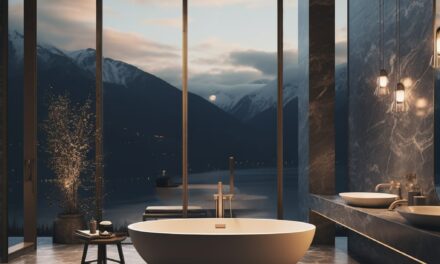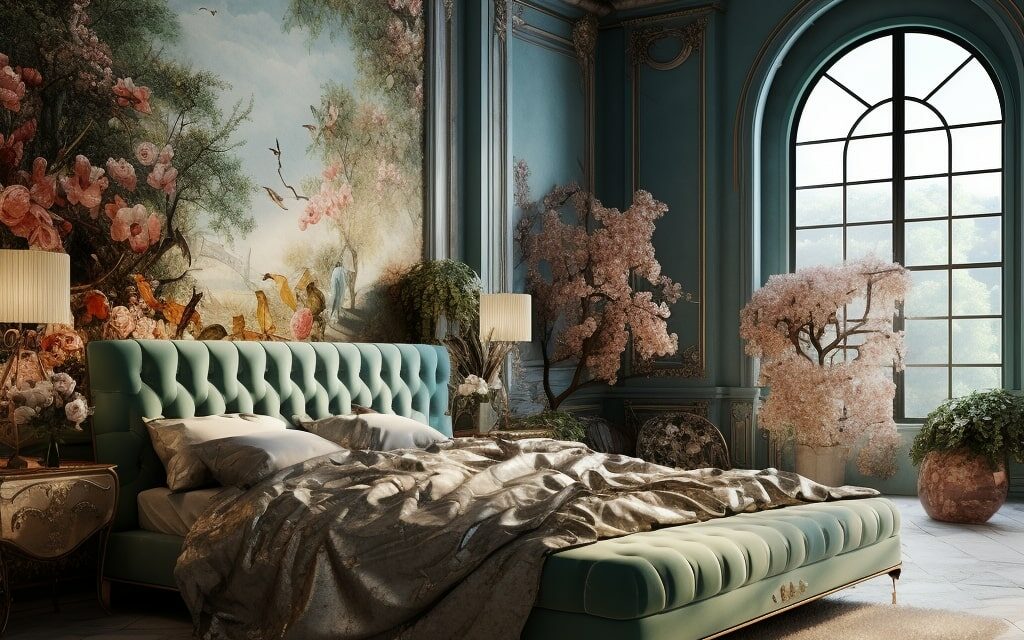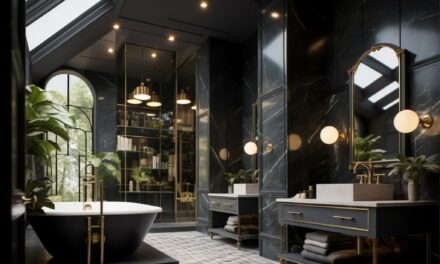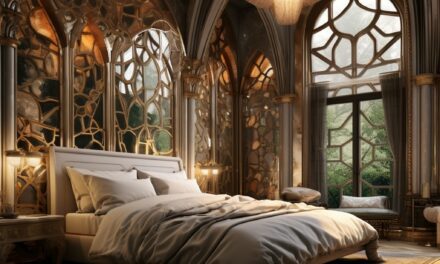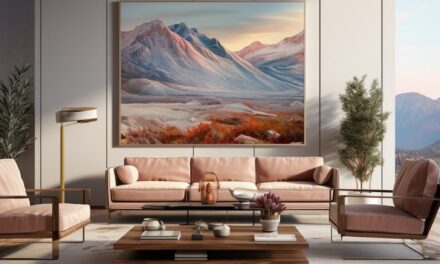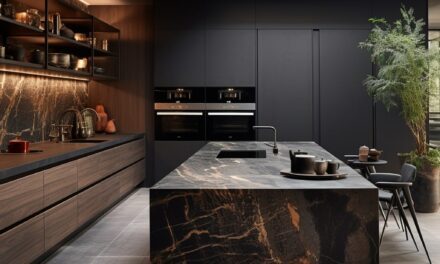Have you ever walked into a room and felt a sense of harmony and balance? This feeling is likely due to the use of the golden ratio in the interior design. The golden ratio is a mathematical concept that has been used in art, architecture, and design for centuries. In interior design, the golden ratio is a useful tool for creating visually harmonious spaces.
The golden ratio is a ratio of 1:1.618, which is also known as the divine proportion. This ratio is found in nature, such as the spiral pattern of a seashell or the branching of trees. In interior design, the golden ratio can be used to determine the ideal proportions and placement of elements, such as furniture, artwork, and decor.
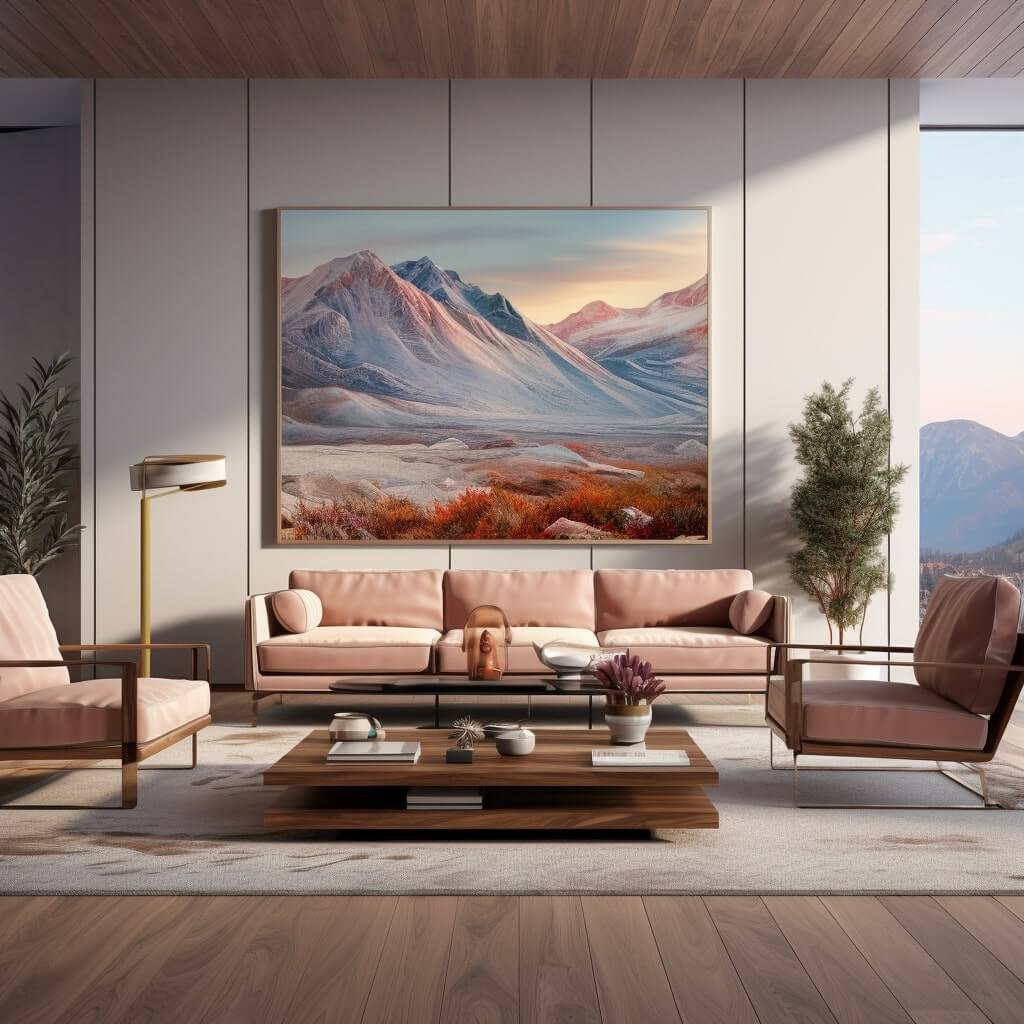
What Is the Golden Ratio in Interior Design?
The golden ratio is a mathematical concept that has been used in various fields, including art, architecture, and design. The ratio is approximately 1.618 and is derived from the Fibonacci sequence. The Fibonacci sequence is a series of numbers in which each number is the sum of the two preceding numbers: 0, 1, 1, 2, 3, 5, 8, 13, 21, and so on. When the numbers in the sequence are divided, they approach the golden ratio.
In design, the golden ratio is often used to create harmonious and visually appealing compositions. The ratio can be applied to various design elements, such as scale, spacing, unity and layout.
Principles of the Golden Ratio
The golden ratio has several principles that govern its application in design:
- Proportion and Scale: The ratio can be applied to create proportional relationships between design elements, such as the height and width of a picture frame or the size of furniture in a room.
- Divine Proportion: The golden ratio has been associated with divine proportion, which is a concept that suggests that some ratios and proportions are naturally pleasing to the eye.
- Repetition and Pattern: The ratio can be used to create repeating patterns and shapes that are visually harmonious and appealing.
Understanding these principles is key to applying the golden ratio effectively in design.
It’s essential if you’re going after a luxury interior design style that needs to resonate with guests.
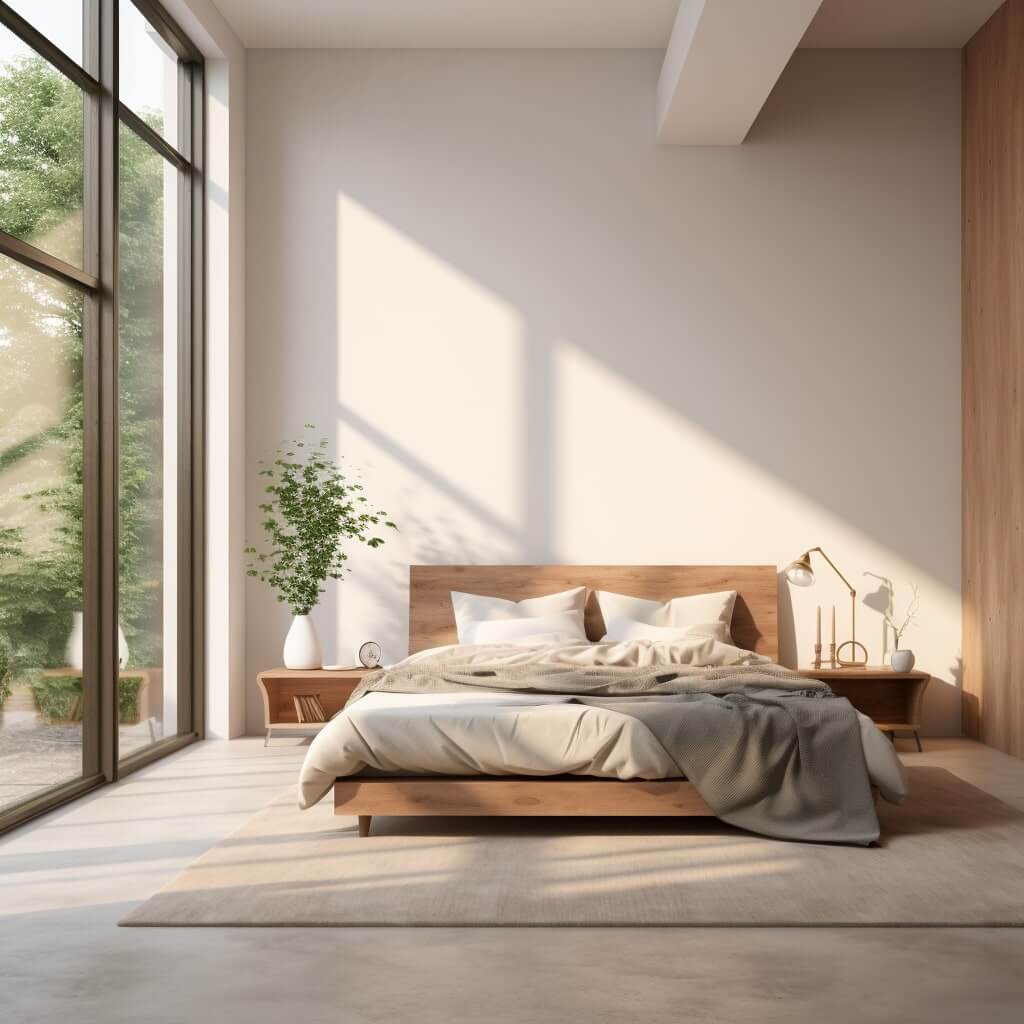
Applying the Golden Ratio in Interior Design
The golden ratio is a powerful tool that can be used to create visually harmonious spaces. Here are some practical tips and techniques to help you incorporate the golden ratio in your interior design:
Proportions
To create a balanced and visually appealing space, it’s important to consider the proportions of your design elements. The golden ratio can be used to determine the ideal size of objects in relation to each other. For example, if you have a tall bookcase in your living room, you could use the golden ratio to determine the width of your sofa or the size of your coffee table.
Spatial Layout
The golden ratio can also be used to determine the layout of your space. By dividing your room into smaller sections based on the golden ratio, you can create a sense of balance and harmony. For example, you could divide your living room into two sections using the golden ratio, with one section for seating and another for a dining area.
Furniture Placement
The placement of your furniture is another important aspect of creating a visually harmonious space. By using the golden ratio, you can determine the ideal placement of your furniture pieces. For example, if you have a large painting on one wall, you could use the golden ratio to determine the ideal placement of your sofa and chairs in relation to the painting.
Artwork Positioning
The golden ratio can also be used to position artwork in your space. By using the ratio to determine the ideal distance between your artwork and other design elements, you can create a visually balanced composition. For example, you could use the golden ratio to determine the ideal distance between your artwork and your furniture pieces.
Related: The difference between interior design and interior architecture
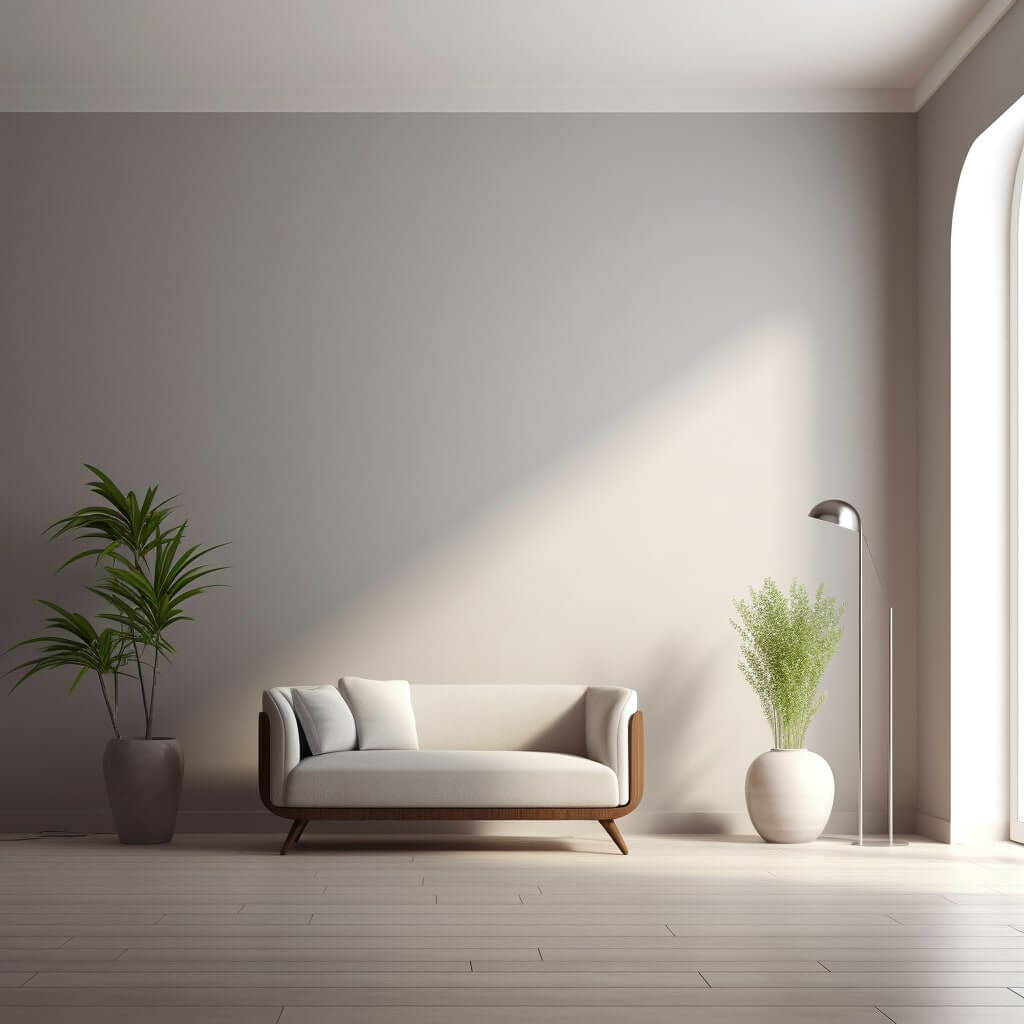
Creating Balance and Harmony
The golden ratio is a powerful tool in achieving visual balance and harmony in interior design. By following this mathematical concept, designers can create aesthetically pleasing spaces that feel balanced and harmonious to the human eye.
The golden ratio provides a framework for achieving balance in interior design because it is based on the principle of proportionality. Elements that are proportioned according to the golden ratio feel balanced and harmonious because they are in proportion to each other in a way that is visually appealing.
Proportion and the Golden Ratio
The golden ratio is based on the idea of proportion, which is the relationship between two or more elements in a space. When elements are proportioned according to the golden ratio, they create a sense of visual harmony and balance because they are in a relationship that is aesthetically pleasing to the human eye.
For example, when designing a room, designers can use the golden ratio to determine the ideal proportion between the height of the ceiling and the width of the room. This can help create a sense of balance and harmony in the space, which can enhance its overall aesthetic appeal.
Visual Equilibrium
The golden ratio is also useful in creating visual equilibrium in interior design. Elements that are in proportion according to the golden ratio feel balanced and harmonious because they are in equilibrium with each other.
Visual equilibrium is important in interior design because it can create a sense of calm and relaxation in a space. By using the golden ratio to achieve visual equilibrium, designers can help create a space that feels calming and relaxing to those who occupy it.
A related design principle is gradation in interior design – learn about it too!
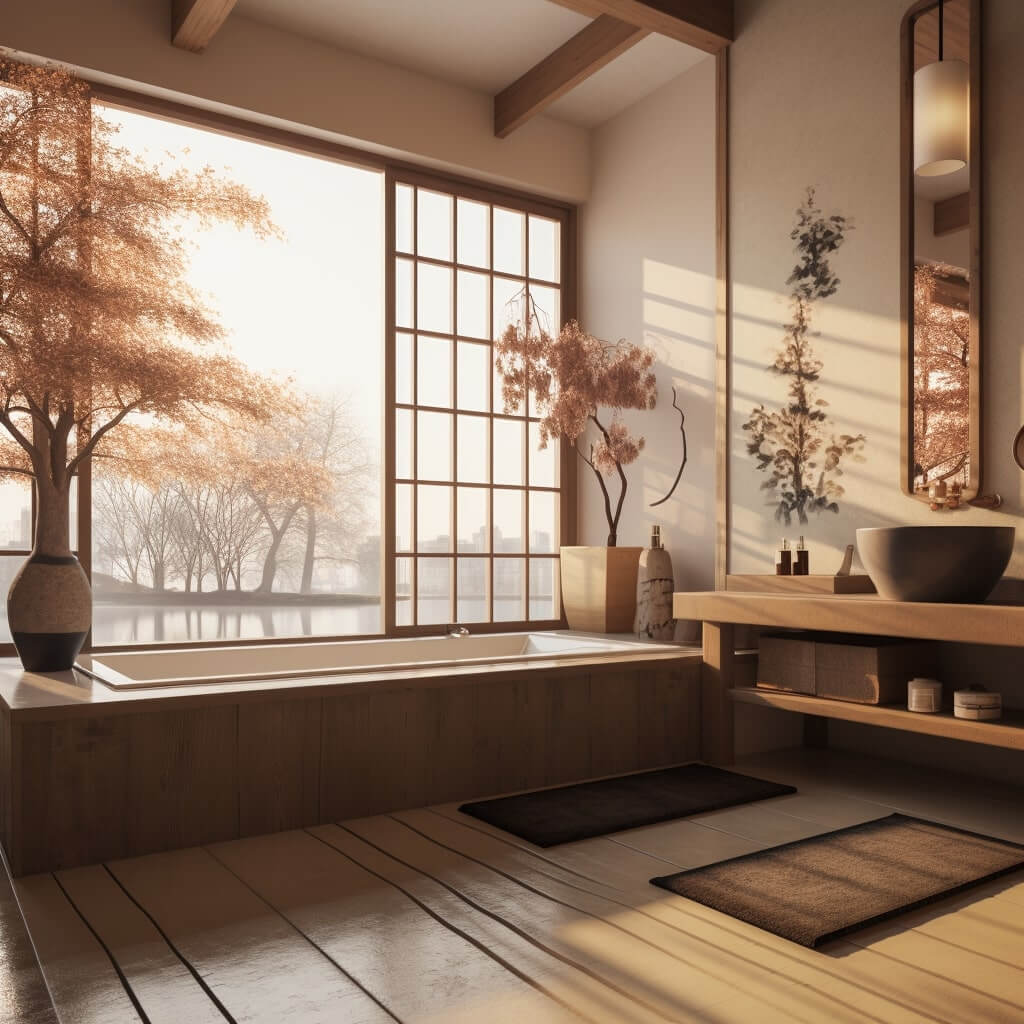
Examples of the Golden Ratio in Interior Design
The golden ratio has been utilized in many famous architectural structures and renowned interior spaces over the centuries. Here are some examples of the golden ratio in action:
The Parthenon, Athens, Greece
The Parthenon is a prime example of the golden ratio in ancient architecture. The entire structure is designed using the principles of this mathematical concept, with the columns, roof, and other elements all conforming to the golden ratio. This creates a sense of harmony and balance, making the Parthenon an iconic symbol of architectural beauty even today.
The Great Mosque of Kairouan, Tunisia
The Great Mosque of Kairouan is a stunning example of Islamic architecture. It is known for its use of the golden ratio in the design of its prayer hall, which is composed of a series of squares that conform to the ratio. This creates a sense of balance and harmony that is both aesthetically pleasing and spiritually uplifting.
The Vitruvian Man by Leonardo da Vinci
Leonardo da Vinci’s famous drawing of the Vitruvian Man, which depicts a male figure with his arms and legs extended in a circle and square, is another example of the golden ratio at work. The proportions of the figure conform to the ratio, creating a sense of symmetry and balance that is both captivating and timeless.
The Seagram Building, New York City
The Seagram Building, designed by Ludwig Mies van der Rohe, is a masterpiece of modern architecture that also incorporates the golden ratio into its design. The proportions of the floor plan, the spacing of the windows, and the height of the building all conform to the ratio, creating a sense of balance and harmony that is both striking and visually pleasing.
These are just a few examples of how the golden ratio has been successfully incorporated into interior design throughout history. By applying this mathematical concept to their projects, designers have been able to create visually harmonious and aesthetically appealing spaces that stand the test of time.
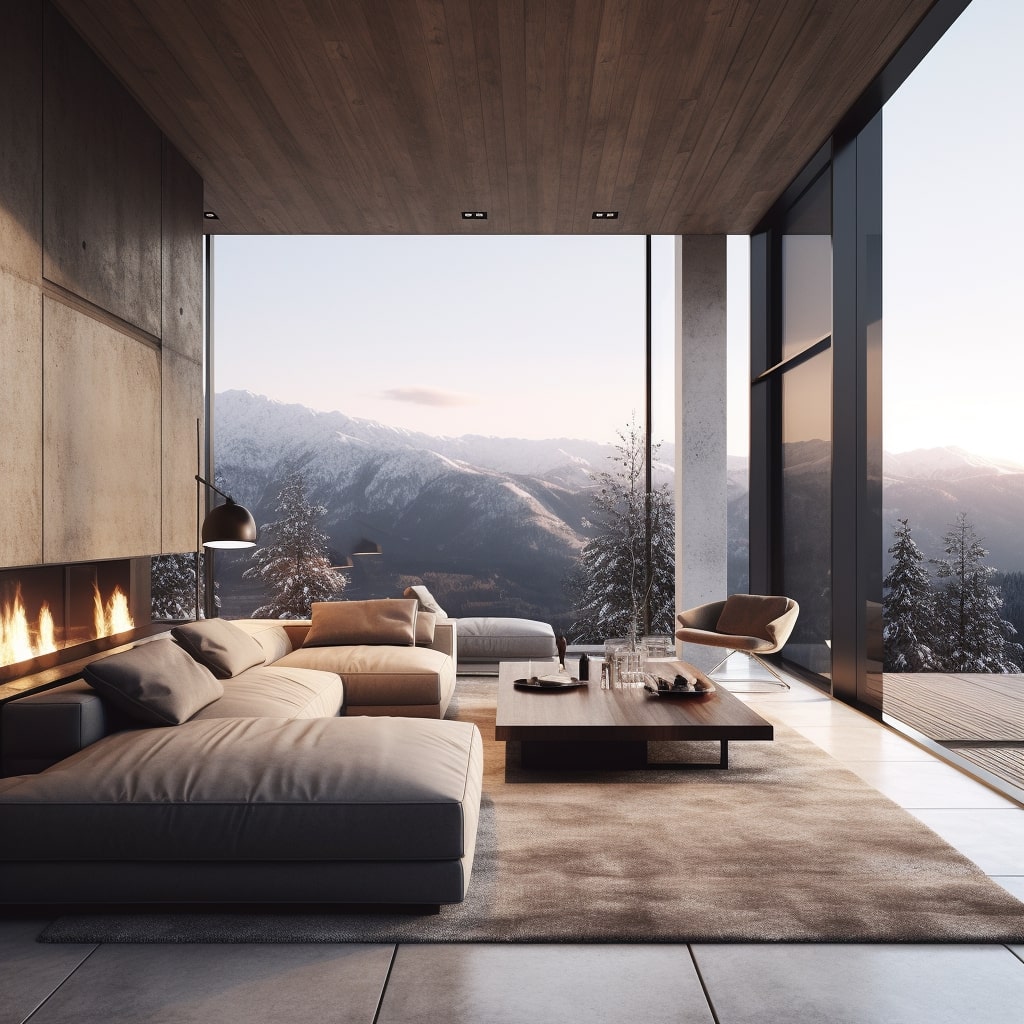
Benefits of Using the Golden Ratio in Interior Design
The golden ratio is not only a mathematical concept, but it can also have significant benefits when applied in interior design. By incorporating the golden ratio, designers can achieve visually pleasing and harmonious spaces that evoke positive emotions in occupants. Here are some of the benefits of using the golden ratio in interior design:
- The golden ratio creates balance and harmony: When applied correctly, the golden ratio can create a sense of equilibrium and order in a space. This can make the room feel more comfortable and inviting to those who use it.
- The golden ratio enhances the aesthetic appeal: By using the golden ratio, designers can create visually appealing spaces that are pleasing to the eye. This can make the room feel more inviting and can help to create a positive emotional response in occupants.
- The golden ratio creates a sense of order: Using the golden ratio can help to create a sense of order in a space. This can make the room feel more organized and can help to reduce visual clutter, which can be distracting and overwhelming.
- The golden ratio can be used in various design elements: The golden ratio can be applied to various design elements such as proportions, form in design, spatial layout, furniture placement, and artwork positioning. This means that it can be used to create harmony and balance throughout the entire room.
Overall, incorporating the golden ratio in interior design can have many benefits. It can create a sense of balance and harmony, enhance the aesthetic appeal, create a sense of order, and be applied to various design elements. Designers who use the golden ratio can create visually pleasing and harmonious spaces that evoke positive emotions in occupants.
While you’re here: Why is interior design important?
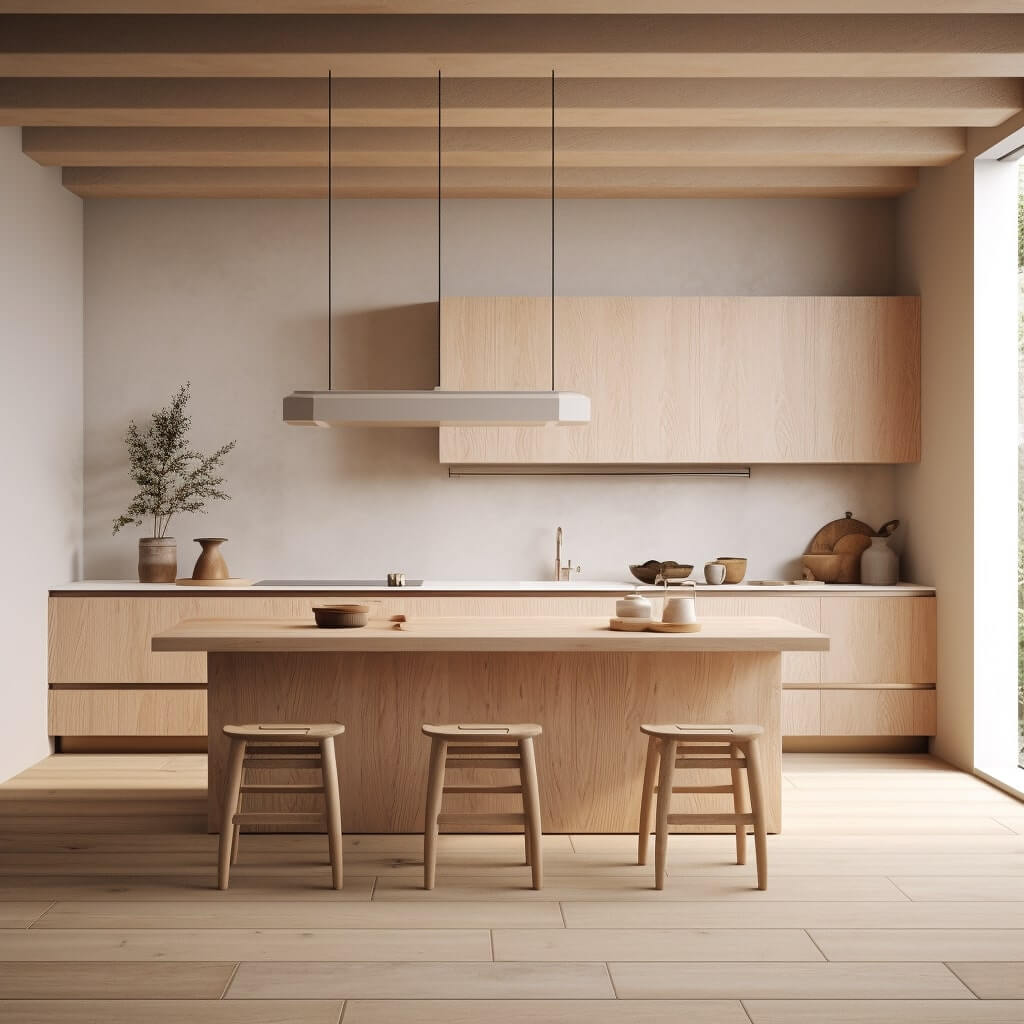
Color and the Golden Ratio
The use of color is a fundamental aspect of interior design, and the golden ratio can provide a useful framework for creating harmonious color schemes in a space. By using the golden ratio to determine the proportion of colors used in the design, it is possible to create a sense of visual balance and order that can enhance the overall aesthetic appeal of the space.
One way to incorporate the golden ratio into color selection is to use the rule of thirds. This involves dividing a color scheme into three sections, with each section containing a dominant color, a secondary color, and an accent color. By choosing colors that follow the golden ratio, it is possible to ensure that the color scheme is balanced and visually harmonious.
Another way to use the golden ratio in color selection is to focus on the proportion of warm and cool colors used in the space. By using warm and cool colors in a ratio that follows the golden proportion, it is possible to create a sense of balance and harmony that can enhance the overall aesthetic appeal of the space.
| Warm Colors | Cool Colors |
|---|---|
| Red | Blue |
| Yellow | Green |
| Orange | Purple |
When incorporating color into an interior design scheme, it is important to consider the emotions that different colors can evoke. For example, warm colors tend to be energizing and stimulating, while cool colors are often associated with calmness and relaxation. By using the golden ratio to create a balanced mix of warm and cool colors, it is possible to create a space that is both visually pleasing and emotionally appealing.
Overall, the use of the golden ratio in color selection can be a powerful tool for creating harmonious and balanced interior designs. By using this mathematical concept to guide the proportion of colors used in the design, it is possible to create a space that is visually appealing, emotionally engaging, and aesthetically satisfying.
Texture and the Golden Ratio
Texture plays an important role in interior design as it adds depth and dimension to a space. The right combination of textures can create a visually interesting and inviting environment. However, incorporating texture can be tricky without proper guidance. This is where the golden ratio comes in to help designers create a harmonious balance between different textures.
But what exactly is texture?
Texture refers to the surface quality of a material, such as rough, smooth, shiny, matte, or grainy. It can be tangible or visual and has the power to evoke emotions and set the tone for a space. When selecting textures for an interior design project, it is important to consider how they will work together to create a cohesive look and feel.
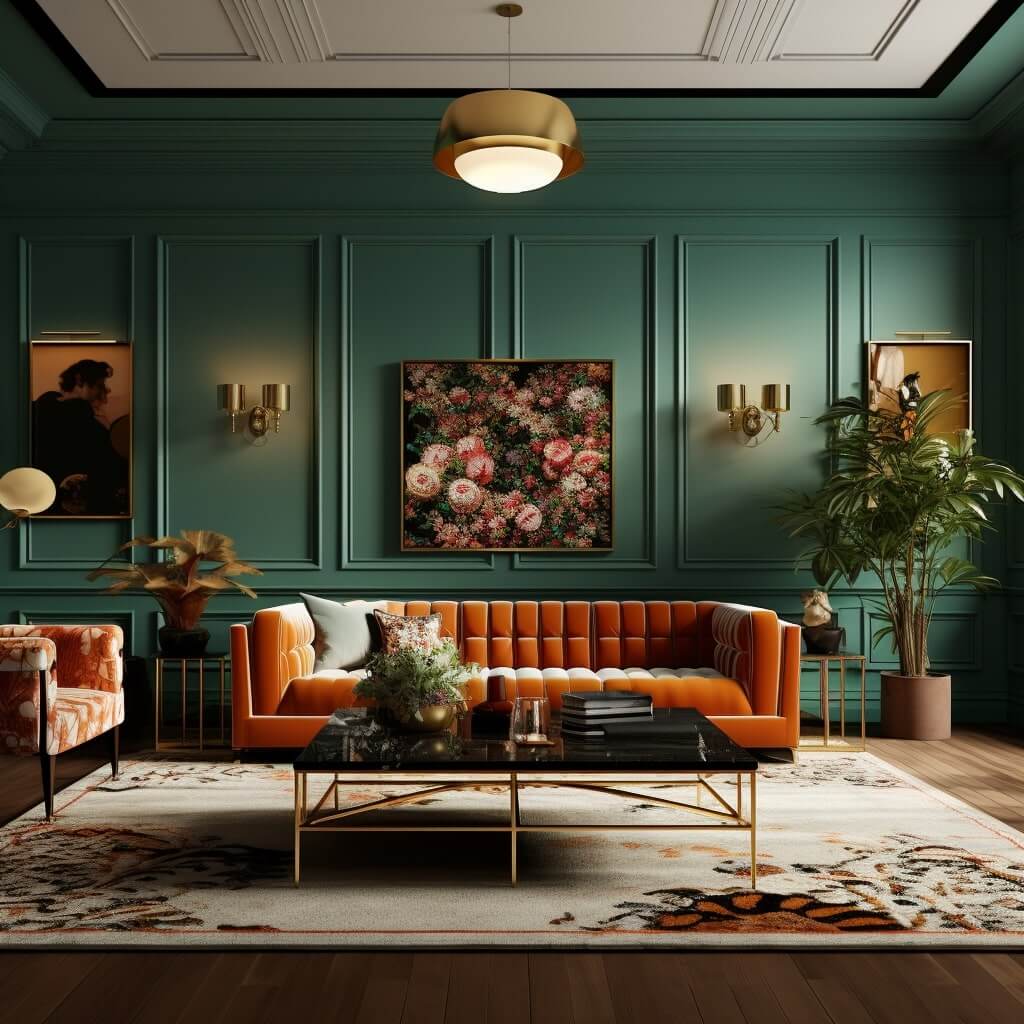
How the Golden Ratio Can Enhance Texture in Interior Design
The golden ratio can serve as a guide for selecting and combining different textures in a space to achieve visual harmony. As with all elements of design, it is essential to follow the principles of balance and proportion to ensure a pleasing composition.
One way to use the golden ratio with texture is to follow the rule of thirds. This means dividing the space into thirds and selecting textures that complement each other within each section. For instance, using a rough texture for one-third of the space and a smooth texture for the remaining two-thirds can create a dynamic balance.
Additionally, the golden ratio can help designers choose the right amount of each texture for a space. Too much of one texture can overwhelm the senses, while too little can create a bland and unremarkable environment. By applying the golden ratio, designers can find the perfect balance between different textures and create a visually interesting and harmonious space.
Examples of Texture and the Golden Ratio in Interior Design
One example of texture and the golden ratio in interior design can be seen in the use of wooden accents and furniture in a space. Wooden textures can bring warmth and natural beauty into a room, but too much wood can create a heavy and overwhelming atmosphere. By applying the golden ratio, designers can create a balanced composition by using wood in one-third of the space and complementing it with other textures such as fabric or metal.
Another example is the use of wallpaper in an interior space. Wallpaper can add depth and interest to a room, but can also overwhelm if not used properly. By using the golden ratio, designers can select a single wall for the wallpaper and balance it out with a solid color on the other walls to create a visually harmonious composition.
Overall, incorporating texture in interior design can be a powerful tool in creating a visually interesting and inviting space. By using the golden ratio as a guide, designers can achieve balance and harmony between different textures and elevate the aesthetic appeal of a room.
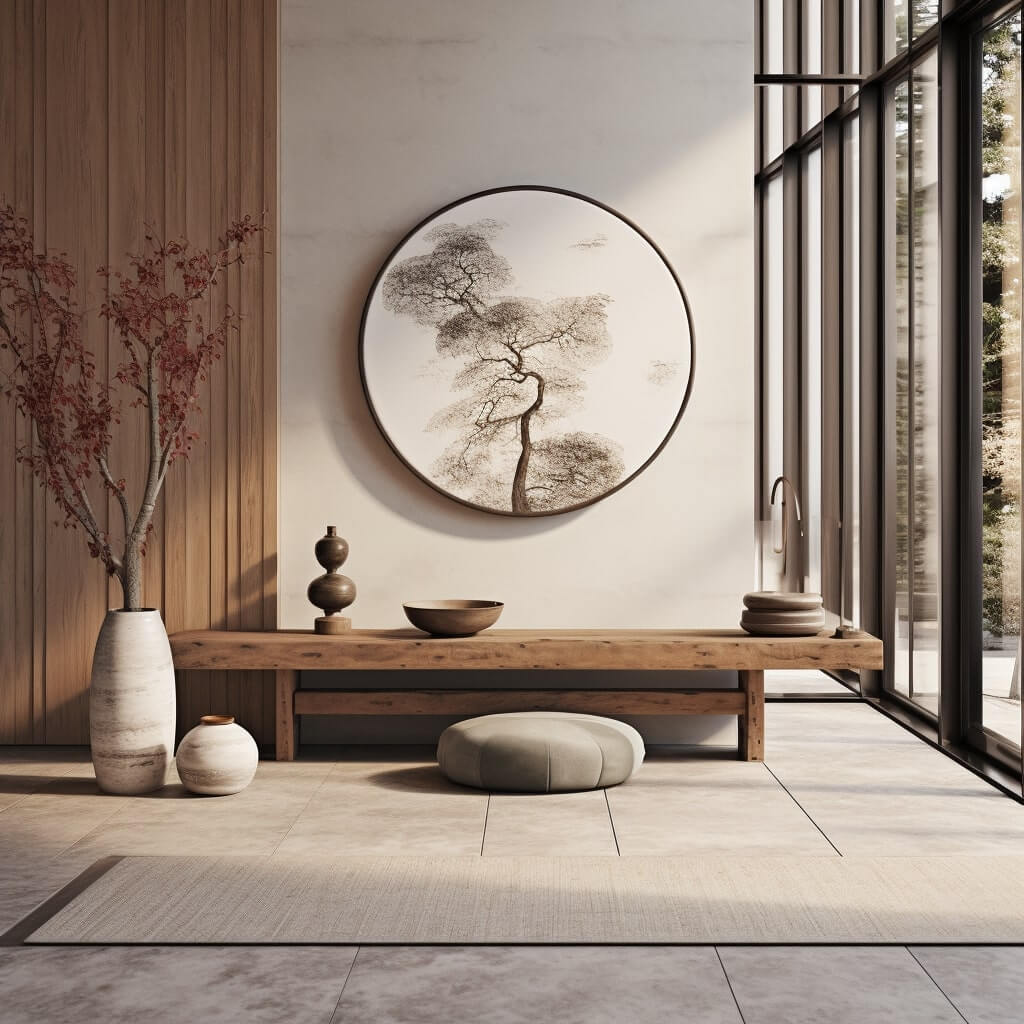
Lighting and the Golden Ratio
Lighting is an essential element in interior design, and it plays a crucial role in creating mood, ambiance, and functionality in a space.
Incorporating the golden ratio in lighting design can enhance its impact, creating a visually harmonious and balanced environment.
To achieve a balanced lighting design, the golden ratio can be applied to determine optimal light placement and intensity.
For example, the ratio can be used to determine the placement of overhead fixtures or the position of table lamps.
By following the principles of the golden ratio, lighting can create an even distribution of light throughout the space, avoiding harsh shadows or bright spots.
The color temperature of light can also be balanced using the golden ratio.
By selecting colors that correspond to the ratio, such as warm tones in a 3:5:8 or cool tones in a 2:3:5 distribution, the lighting design can create a cohesive and pleasing color scheme.
In addition, accent lighting can be utilized to highlight specific design elements and create visual interest in a space.
By employing the golden ratio in accent lighting, designers can create a balanced and visually pleasing effect.
Furniture and the Golden Ratio
When it comes to furniture in interior design, the golden ratio can be a useful tool for achieving balance and harmony in a space. The concept can help guide the selection and placement of furniture to create a visually appealing composition that evokes positive emotions in occupants.
To apply the golden ratio to furniture design, start by considering the proportions of each piece. The ideal ratio for furniture is 1:1.618, which creates a balanced and visually pleasing composition. Consider using this ratio when selecting and arranging furniture pieces such as sofas, chairs, and tables.
| Furniture Piece | Ideal Dimensions (inches) |
|---|---|
| Sofa | 84 x 52 |
| Chair | 31 x 19 |
| Coffee Table | 48 x 30 |
In addition to proportions, consider the placement of furniture in a space. The golden ratio can guide the placement of furniture to create a visually balanced composition. For example, placing a sofa along one wall and a chair opposite it at a distance of 1.618 times the length of the sofa can create a visually harmonious composition.
Using the golden ratio in furniture design can help create a sense of order and balance in a space that enhances the overall aesthetic appeal.
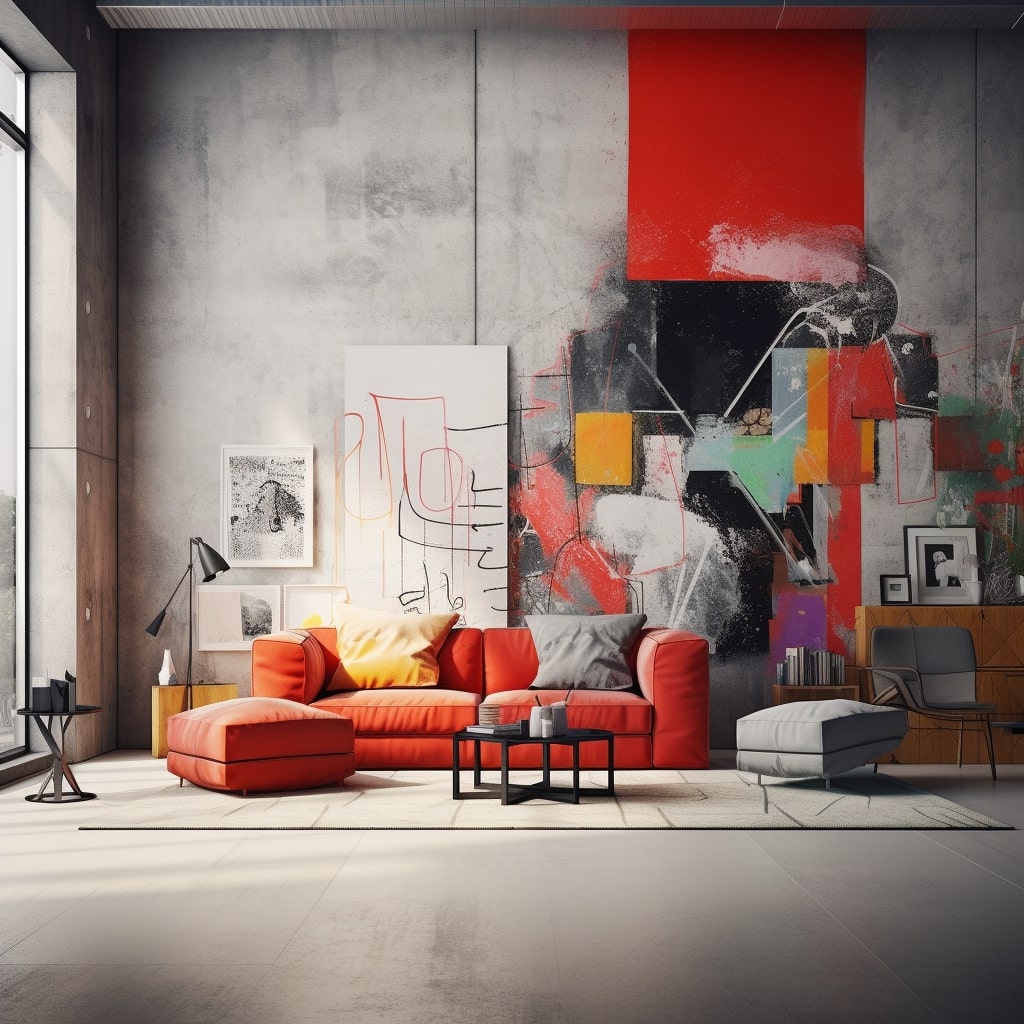
Incorporating the Golden Ratio in Small Spaces
Small spaces can present challenges in interior design, but applying the golden ratio can help optimize these areas. Here are some tips:
- Focus on proportion: In small spaces, it’s important to maintain balanced proportions. Use the golden ratio to determine the ideal dimensions for furniture and decor, ensuring they don’t overwhelm the space.
- Maximize vertical space: To create the illusion of height and spaciousness, use the golden ratio to determine the ideal placement of shelves and wall art. This will draw the eye upward and make the space appear larger.
- Select furniture wisely: In a small space, every piece of furniture counts. Use the golden ratio to select furniture that is appropriately sized and proportioned for the room. Choose multi-functional pieces, such as a sofa bed or storage ottoman, to maximize functionality.
- Keep it simple: In small spaces, less is often more. Use the golden ratio to determine the most effective placement of decor and accessories, and avoid cluttering the space.
Frequently Asked Questions
Here are some common questions and concerns related to the golden ratio in interior design:
What is the golden ratio?
The golden ratio is a mathematical concept that has been used for centuries in various fields, including art, architecture, and design. It is a ratio of approximately 1.618:1, and it is believed to represent perfect proportions that are aesthetically pleasing to the human eye.
How is the golden ratio applied in interior design?
The golden ratio can be applied to various elements in interior design, such as spatial layout, furniture placement, and artwork positioning. It can also be used to achieve harmonious color schemes, select and combine textures, determine lighting placement, and optimize small spaces.
Can the golden ratio be applied to any style of interior design?
Yes, the golden ratio is a universal concept that can be applied to any style of interior design, from traditional to contemporary. It is a guiding principle that can help create visually balanced and harmonious spaces, regardless of the design style.
Is it necessary to use the golden ratio in interior design?
While it is not necessary to use the golden ratio in interior design, it can be a useful tool for achieving visually pleasing and harmonious spaces. It is a tried and tested design principle that can enhance the overall aesthetic appeal and create a sense of order and balance in a space.
Should the golden ratio be strictly followed in interior design?
While the golden ratio can be a helpful guideline in interior design, it should not be strictly followed to the point of sacrificing functionality or personal style. It is important to use the golden ratio as a tool, rather than a rigid rule, and to adapt it to suit individual design needs and preferences.
Can the golden ratio be used in combination with other design principles?
Yes, the golden ratio can be used in combination with other design principles and techniques to create visually appealing and functional spaces. It can be used alongside principles such as balance, symmetry, and proportion to achieve a cohesive and harmonious design.
Is it possible to incorporate the golden ratio in existing interior design?
Yes, it is possible to incorporate the golden ratio in existing interior design by assessing the current design elements and identifying areas where the ratio can be applied. It may require some adjustments and modifications, but the principles of the golden ratio can be integrated into any design plan or design rendering.
Can the golden ratio be used to create a specific mood or atmosphere in a space?
Yes, the golden ratio can be used to create a specific mood or atmosphere in a space by influencing the visual balance and harmony of the design elements. For example, using the golden ratio to select and combine textures can evoke a certain mood or feeling in a space, such as warmth or serenity.


